Recent Articles
Popular Makes
Body Types
10 Important Things About the 2019 Lexus ES 300h
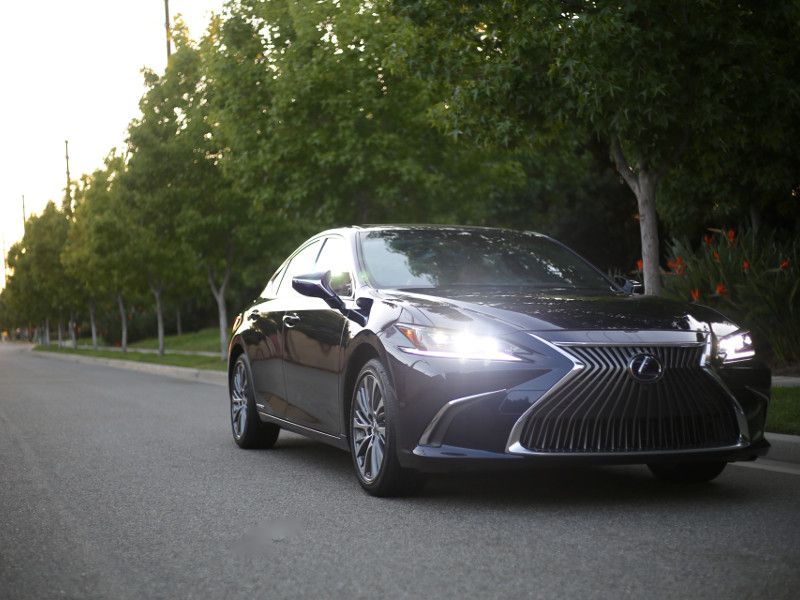
2018 Lexus ES 300h driving ・ Photo by Miles Branman
In 1989, Lexus cruised onto the American luxury car scene with its flagship sedan, the LS400. Aimed directly at Germany’s BMW and Mercedes-Benz, the LS touted comfort and class never before seen from a Japanese automaker. The same year, Lexus introduced an underling model, the ES250. While these alphanumeric nameplates often carry little meaning, Lexus put great emphasis on its “Elegant Sedan” as a distinctive ownership experience.
Six generations and more than a million units later, the ES has played a pivotal role in Lexus’ acclaim among luxury buyers. Still, Lexus can’t rest easy. The 2019 model ES faces stiffer competition than ever before, both in the midsize luxury sedan sector and, increasingly, from premium SUVs. A bold new look, tighter handling and a more efficient hybrid drivetrain are strong selling points — provided the ES retains its renowned comfort.
Here are 10 things to know about the 2019 Lexus ES300h, due at dealerships this October.
10. Body rigidity is up 6 percent, but numbers don’t tell the whole handling story.
All 2019 ES models are based on Toyota’s modular architecture (shared with vehicles like the fourth generation Prius, new Camry and latest Avalon). The platform has been customized to fit the redesigned sedan’s body, with unique structural adhesive and laser screw welding techniques. Lexus says these improvements lead to a 6 percent more rigid body structure than the previous generation ES.
That may not sound like a significant improvement, but Lexus engineers say the enhancements focus on essential chassis components, like suspension pickup points. As a result, the 2019 ES corners flatter and feels tighter than its predecessor. Despite growing 2.6 inches in length, 1.7 inches in width and 2.0 inches in the wheelbase, the weight gain of the latest ES is negligible.
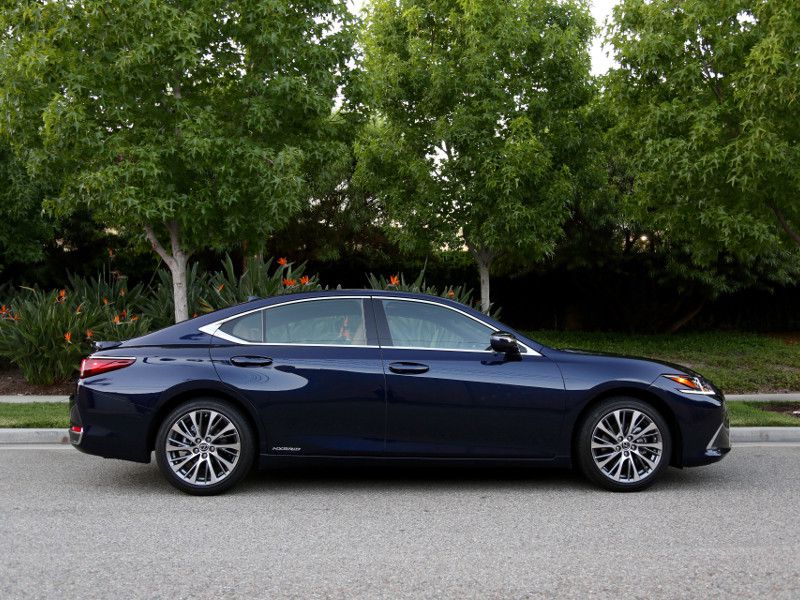
Photo by Miles Branman
9. Lexus says it’s the most aggressive body of any ES so far.
Since its inception, the ES always has been a modest machine. Interior comforts and build quality stood out to owners, but few onlookers would ever give the ES a second glance. However, the seventh generation sedan breaks from tradition, with the largest adaptation of Lexus’ spindle grille we’ve seen yet, a gently sloping roofline, sharp LED headlights and taillights, and a defined beltline.
These tweaks finally give the sedan some personality, and while the gaping grille may not be to everyone’s taste, it invites the attention expected of a luxury vehicle. As a bonus, the ES hybrid’s stylish 18-inch alloy wheels feature a hollow section in the rim to reduce tire noise. How’s that for a blend of form and function?
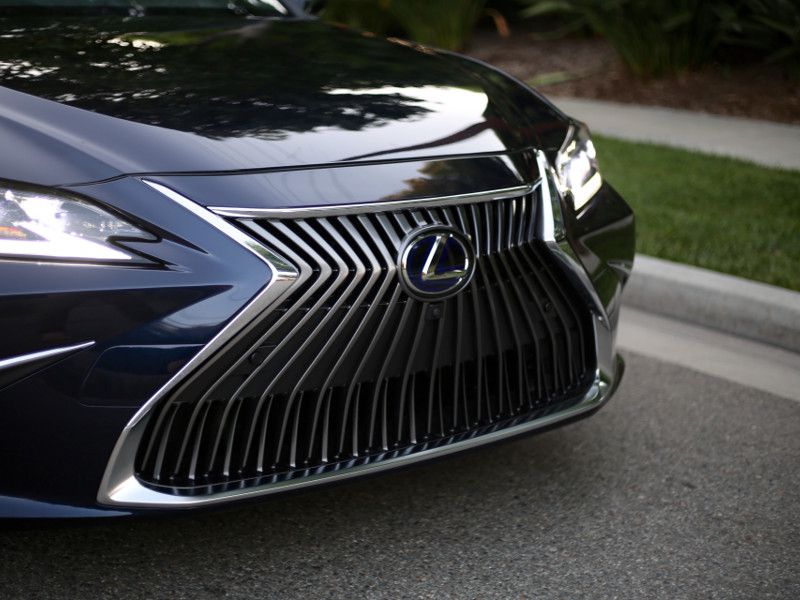
Photo by Miles Branman
8. The hybrid system still uses a nickel metal hydride battery.
Not everything on the 2019 Lexus ES300h is new. While the broader industry makes the switch to lithium-ion batteries, which are lighter and offer faster charging and discharging, Lexus engineers chose to stick with nickel metal hydride batteries. Why? Beyond the added cost to re-engineer a hybrid system, Lexus engineers prefer the durability of nickel hydride units.
In the ES sedan, the 1.6-kWh battery pack is slotted below the rear floor, which improves rear-seat space and helps lower the center of gravity. Since the ES300h does not have a plug for external charging, the primary drive motor and regenerative-braking system recharge the battery. At very low speeds, the ES hybrid can operate in all-electric (EV) mode until the battery is depleted.
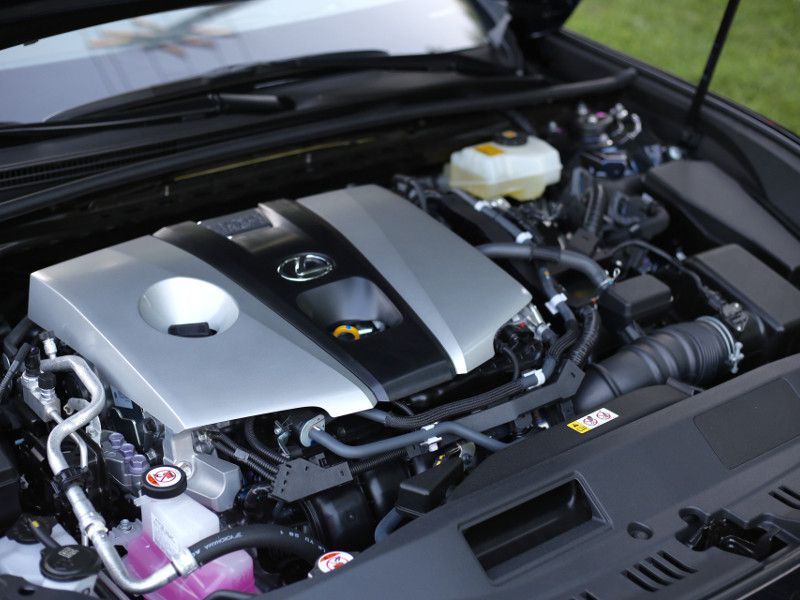
Photo by Miles Branman
7. This is the most efficient luxury vehicle in the U.S. (without a plug).
Despite using carry-over hybrid architecture, the 2019 ES300h boasts increased power and efficiency. A combination of port and fuel injection for the 2.5-liter Atkinson cycle 4-cylinder sees output rise to 176 hp (20 more than the previous version). Combined with the electric motor, total output increases to 215 hp. The powertrain improvements do not translate to quicker 0 to 60 mph acceleration, but mid-range performance is slightly more enthusiastic.
In terms of efficiency, gains are more pronounced. The EPA rates the 2019 ES Hybrid’s fuel economy at 43 mpg in the city, 45 on the highway and 44 combined. These figures represent increases of 3, 6 and 4 mpg, respectively.
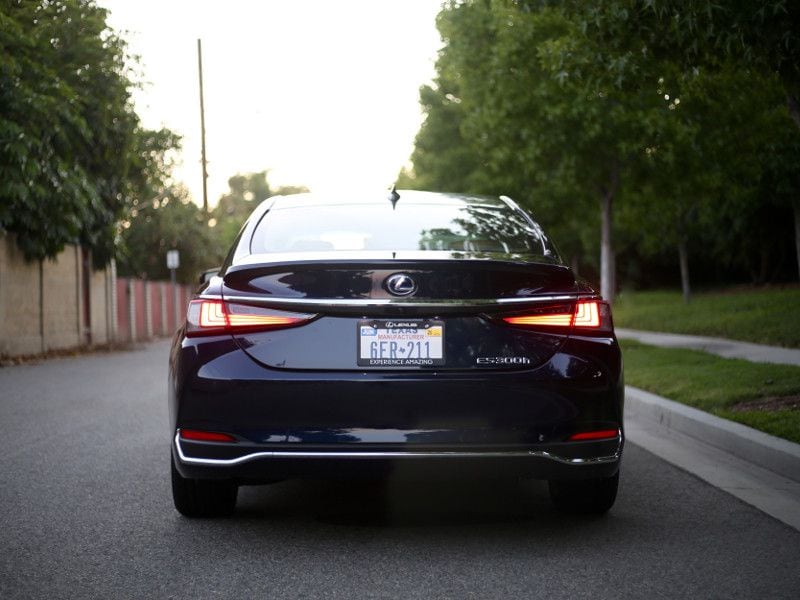
Photo by Miles Branman
6. Lexus finally adds Apple CarPlay integration.
One of the biggest gripes among Lexus owners has been the absence of Apple CarPlay and Android Auto functionality – a common feature among contemporary luxury and mainstream vehicles alike. With the introduction of the 2019 ES, Lexus finally hops on the bandwagon, bolstering its on-board tech to include CarPlay, Siri Eyes Free, a Verizon Wi-Fi hotspot, wireless charging, a 10-speaker Pioneer sound system and Amazon Alexa integration. Still missing is Android Auto, leaving a large chunk of smartphone users to rely on traditional Bluetooth pairing for calling and audio streaming. On the bright side, Lexus doesn’t charge for CarPlay — unlike BMW and Mercedes-Benz.
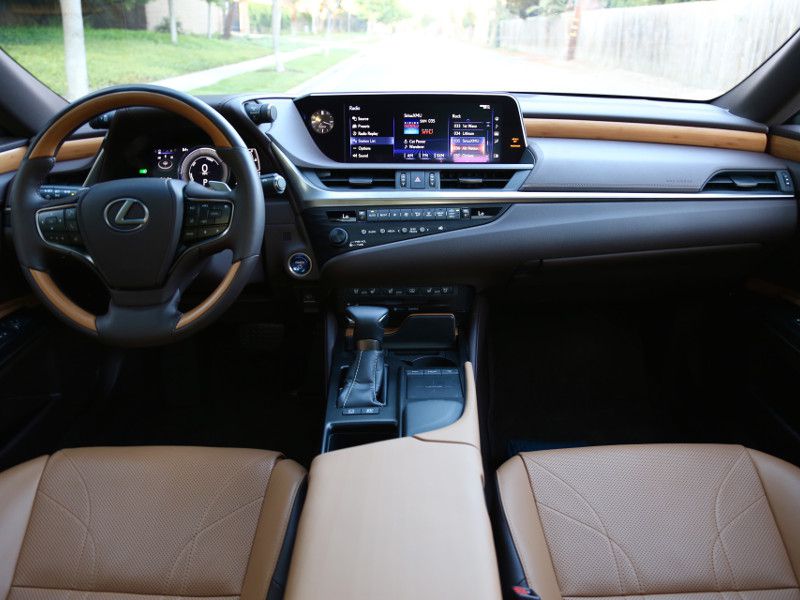
Photo by Miles Branman
5. The dashboard has gone digital.
Each premium automaker has taken a different path to digitizing vehicle dashboards. Some, like Mercedes-Benz, have effectively turned the space below the windshield into one massive, widescreen monitor. Others, like BMW, have hybridized gauges with analog and digital components. At the highest end of the segment, Rolls-Royce and Bugatti have resisted any form of digital gauge cluster. Lexus is somewhere in the middle of all this.
The 2019 ES300h certainly has plenty of digital real estate, with a 7.0-inch reconfigurable TFT monitor flanked by accessory screens, an available 12.3-inch infotainment screen (an 8.0-inch display is standard), and a full-color head-up display. Unlike Mercedes-Benz’s “surfboard” monitor, however, Lexus integrates its screens within custom housings, so the emphasis remains on traditional luxury details. Controlling the center screen is Lexus’ Remote Touch Interface (RTI), a track pad with four zones and a few accompanying buttons. RTI works reasonably well, but we prefer BMW’s more intuitive iDrive system.
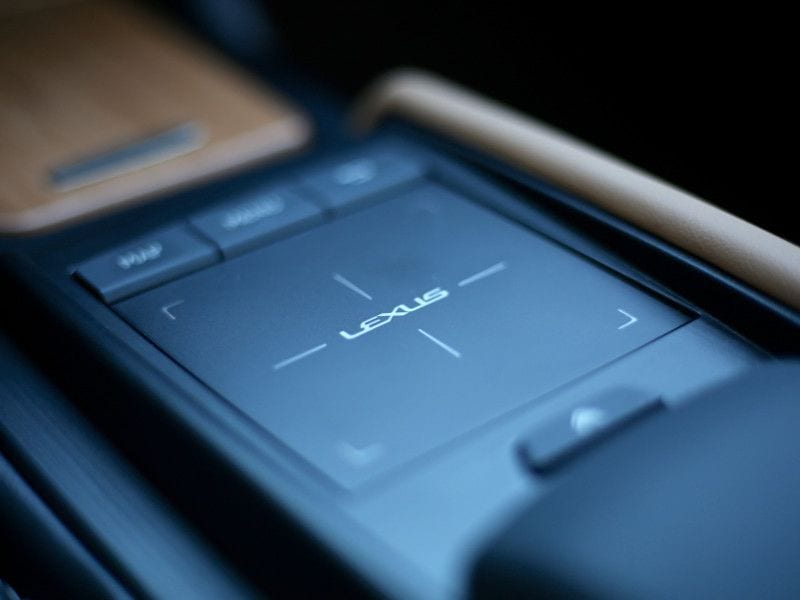
Photo by Miles Branman
4. Driver assistance features come standard.
CarPlay isn’t the only convenience feature many premium automakers put on the options list. The latest driver assistance technologies — some that may even be standard on mainstream models — often cost extra on German luxury cars. Lexus distinguishes itself from its rivals in this regard. Every ES model comes with the Lexus Safety System+ suite of active safety goodies, including pre-collision alerts, emergency braking, pedestrian detection, adaptive cruise control, traffic sign recognition, lane tracing assist, lane departure alert and automatic high beams.
The ES sedan also features a wide-angle backup camera with gridlines, and front and rear parking sensors. Drivers who want additional aids can purchase a $1,900 package with blind spot monitoring and a 360-degree camera.

Photo by Miles Branman
3. Interior trim options include real bamboo.
The use of real-wood trim in luxury vehicle interiors is nothing new. These days, several high-end manufacturers have graduated to open-pore wood for its tactile distinction. On the 2019 ES300h, Lexus fires back with matte finish bamboo on the door panels and steering wheel. Paired with the right shade of leather (there are three to choose from — chateau, flaxen and black) and dash trim, bamboo is a brilliant contrast to the updated ES cabin. If bamboo isn’t your thing, Lexus also offers striated black, linear espresso wood or linear dark mocha wood trim.
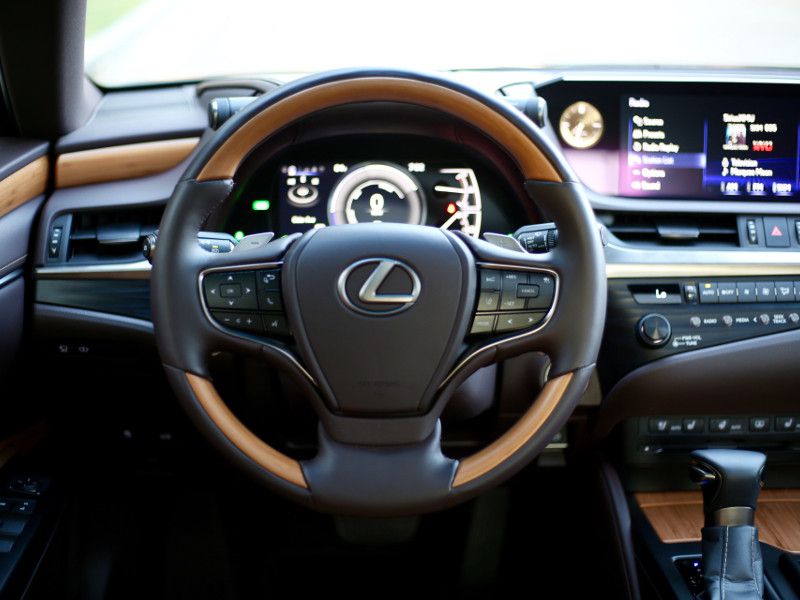
Photo by Miles Branman
2. You could hear a pin drop in this cabin.
A stiffer chassis and more aggressive body help the 2019 Lexus ES feel more comfortable in the company of performance luxury sedans, but Lexus buyers also expect superior ride quality and minimal cabin noise. To deliver a smooth ride, the new ES features adaptive dampers that filter out harsh impacts and a new 4-point engine mounting system that reduces vibration. To keep road and wind noise down, the ES300h utilizes the aforementioned hollow-section wheels wrapped in quieter Bridgestone all-season tires, acoustic glass, three layers of firewall padding and increased sound deadening materials on the floorboard. All this adds up to a 93% noise reduction rating (the previous generation had a 75% rating).
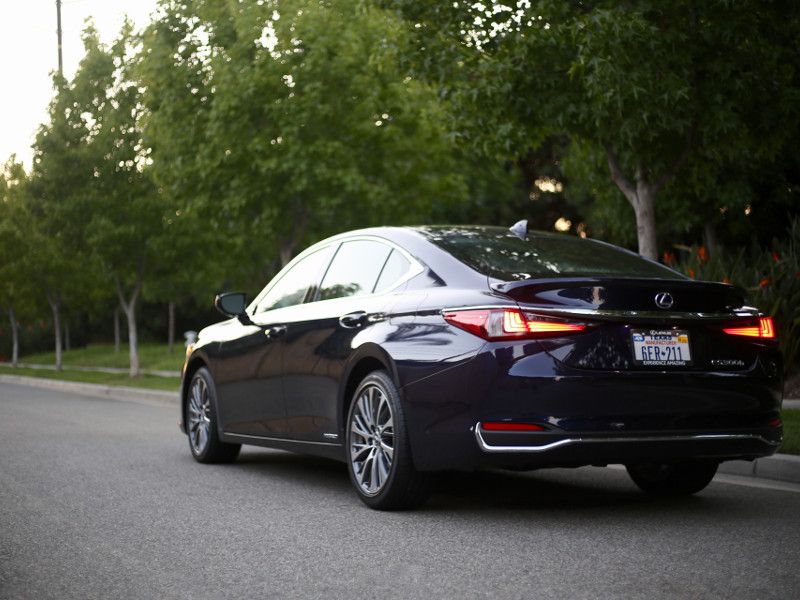
Photo by Miles Branman
1. The 2019 Lexus ES300h is cheaper than its predecessor.
Despite exhaustive improvements to the ES300h luxury sedan and an increase in standard content, Lexus has cut the 2019 model’s starting figure by $510. Entry-level Premium trims now begin at $42,335, including destination and handling fees. Luxury and Ultra Luxury grades add equipment like window shades, ventilated seats, a moonroof, semi-aniline leather, a hands-free power trunk and ambient lighting.
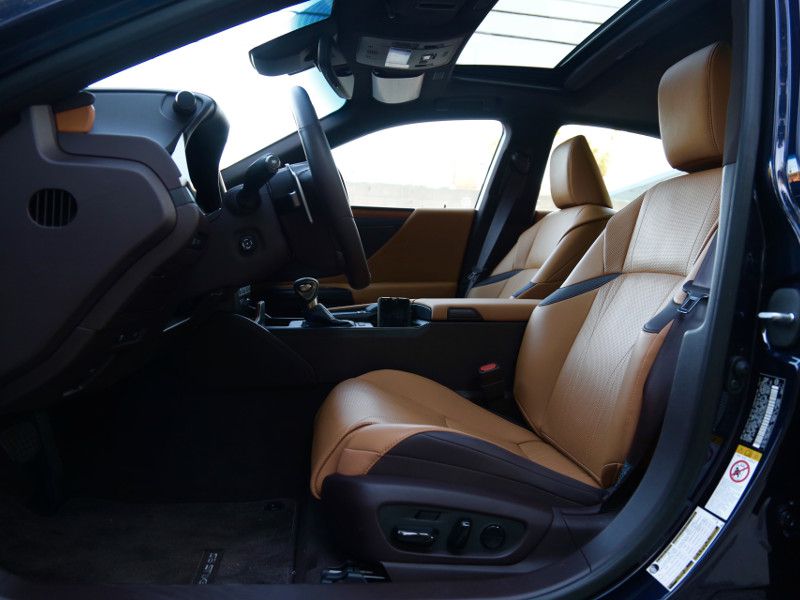
Photo by Miles Branman